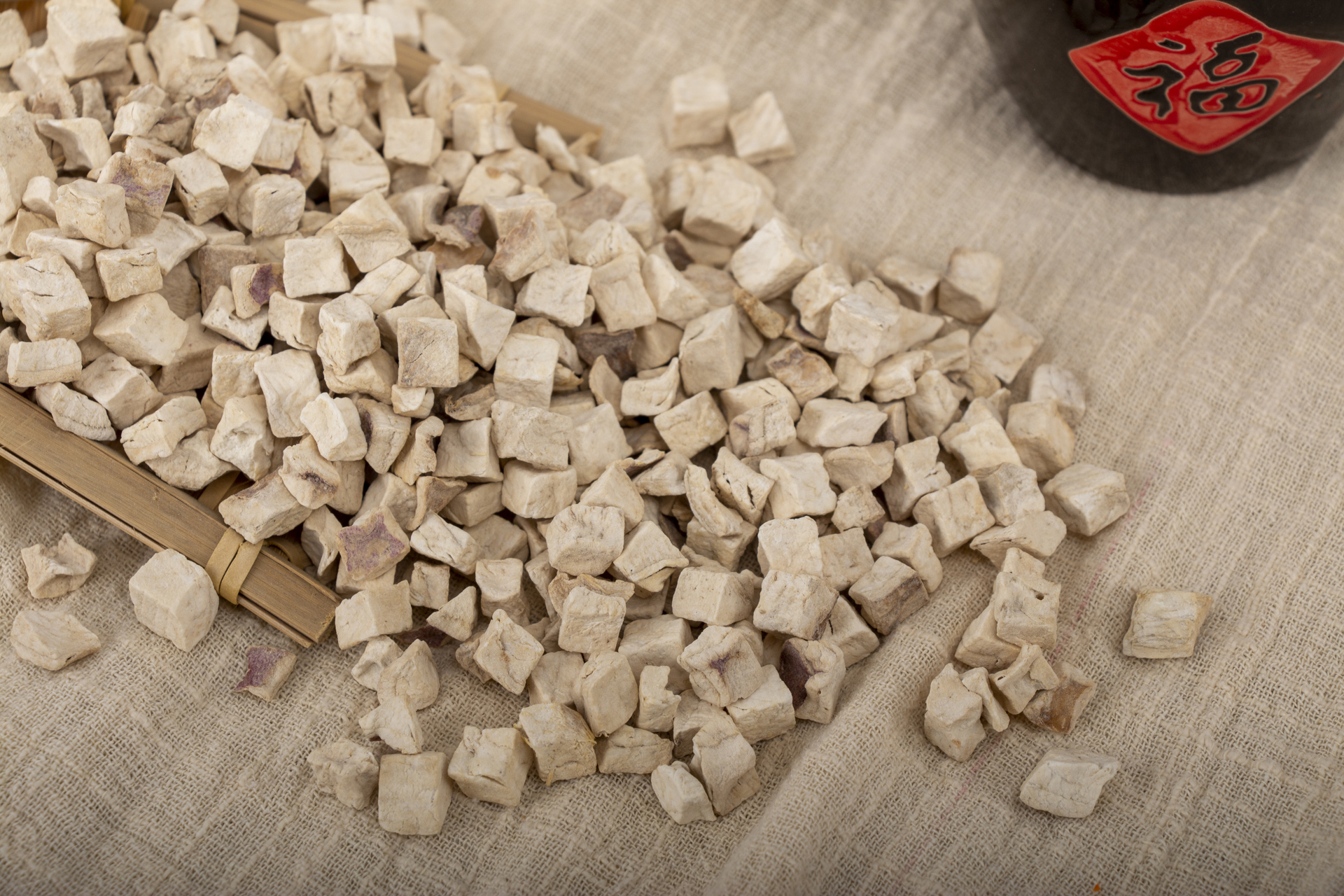- No.3 Beijing East Road, Laixi Economic Development Zone, Qingdao City, Shandong Province

| Moisture | ≤10% |
| Starch | ≥55% |
| Ash | ≤6.0% |
Dehydrated sweet potato cubes are made from high-quality sweet potatoes. After physical cleaning, sorting, and removing impurities, they are cut into cubes and then processed using a standardized hot air drying method. During the processing, strict control of temperature and time is applied to achieve balanced and controllable moisture levels, reducing the risk of moisture absorption and mold growth during storage of the raw materials. Some production processes also include safety detection steps such as metal detection to ensure that the final product is free of impurities and meets microbial standards, complying with the safety requirements for pet food raw materials, laying the foundation for subsequent applications.
Dehydrated sweet potato cubes retain the natural nutritional components of sweet potatoes and can be used as a functional supplementary raw material for pet food. They contain vitamins A, C, potassium, calcium and other minerals, which can provide basic nutrients necessary for pets' daily lives. The abundant dietary fiber helps promote the intestinal peristalsis of pets and maintains the normal function of the digestive system. Their moderate carbohydrate content and relatively low glycemic index make them one of the energy sources for pets' daily needs, and they are suitable for the nutritional requirements of pets at different physiological stages.
Dehydrated sweet potato cubes can be widely incorporated into pet food production. In pet dry food, their cube shape can be evenly mixed with meat powder, grains (or grain-free bases) to enhance the integrity and flavor profile of the dry food particles; in wet food and canned products, they can maintain their shape to prevent excessive softening, thereby enhancing the chewing experience for pets; in pet snacks or supplementary foods, they can be directly added or simply rehydrated for use, which is suitable for various product types such as snacks and nutritional supplement meals, meeting the formulation design requirements of different pet foods.